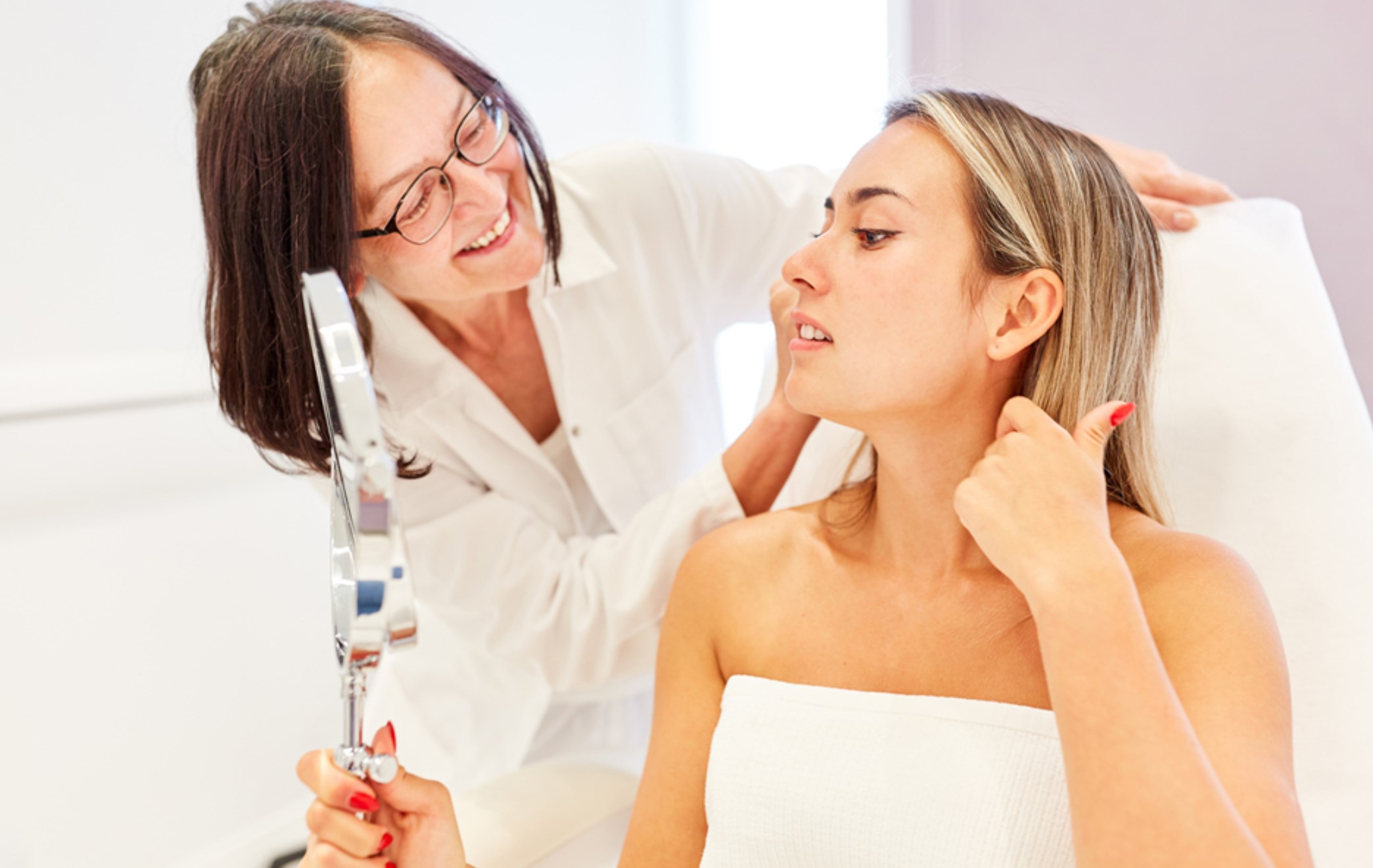blog
A Medical Practitioners Guide to Botox and Filler Aftercare

Jul 27 2023
Reading Time: 4 Minutes
Author: Patricia Pezzano
Learning how to inject is just the beginning—aesthetic injectors also have a responsibility to ensure their patients have a healthy post-procedure experience.
The importance of aftercare is twofold: avoiding uncomfortable complications and ensuring patient satisfaction. By helping patients accomplish both, you’ll get peace of mind and build valuable credibility as an injector.
To keep you on the right track, we’ve created a downloadable template outlining the key Botox and dermal filler aftercare instructions that you can use in your medspa or aesthetic clinic.
Common Side Effects of Botox and Dermal Fillers
Building confidence in injecting Botox and cosmetic fillers is about understanding the side effects, how to mitigate them, and how to communicate this to your patients.
With proper education and training, Botox and dermal fillers can be safe treatments to perform.
With that being said, all medical treatments come with expected side effects and risks. These may include:
- Swelling
- Bruising
- Tenderness around the area
- Redness, especially where the injection was administered
These effects should only last a few days. However, your patients should understand that there are activities to avoid after getting injected with Botox and fillers.

What to Do After Botox Injections
| ✔️ | No strenuous exercise for 24 hours |
| ✔️ | Avoid applying pressure to face for 24 hours |
| ✔️ | Don’t touch or rub the treatment area |
| ✔️ | Do not apply makeup for at least 4 hours |
| ✔️ | Avoid the use of facial tools like jade rollers for 24 hours |
| ✔️ | No lying down for the first 4 hours (+ avoid sleeping on injected side) |
| ✔️ | Avoid drinking alcohol for at least the first 24-48 hours |
| ✔️ | Avoid wearing tight eyewear such as glasses for 4 hours |
| ✔️ | Limit sun exposure and avoid tanning beds for 24 hours |
Botulinum toxin injections—Botox—work by preventing muscles from contracting, minimizing the appearance of wrinkles and facial lines. Advise your patients to avoid the following to achieve optimal results:
Strenuous Exercise and Physical Contact
Patients should avoid intense physical exercises like cardio or endurance training in the first 24 hours after their treatment. Light activities—such as going for a slow walk around the block—are safe, but caution is advised.
Patients should also avoid disturbing the area by touching or rubbing because there is a chance that the toxin might spread to other areas. For patients who have gotten a lip flip, this means they should avoid kissing anyone for at least 4 hours.
This rule applies to other areas of the body where Botox was injected as well, meaning massages must be avoided for at least 24 hours.
Wearing Makeup or Other Facial Tools
To avoid Botox migration, you should advise your patients not to touch their face or wear makeup after their Botox injection—it can spread the toxin to unwanted muscles and result in facial asymmetries. There’s also the risk of infection since the injection site is still an open wound.
Facial tools such as jade rollers may cause more bruising or swelling in the treated area, so these must be avoided as well for the time being.
Lying Down
Botox aftercare 101 is preventing accidental toxin migration and further bruising.
As such, advise your patients not to lie down for at least 4 hours after their treatment. Sleeping on the side as the injection site should also be avoided, at least for the first night after getting Botox injections.
Drinking Alcohol
Advise your patients not to drink alcohol for the first 24 hours after their injection.
This is because alcohol is a blood thinner, which in turn can increase swelling or bruising around the injection site. Some patients also report feeling dizzy or drowsy after their treatment—symptoms that alcohol will only make worse.

What to Do After Dermal Filler Injections
| ✔️ | No microdermabrasion for 2 weeks |
| ✔️ | Avoid applying pressure to injection site for 24 hours |
| ✔️ | Don’t touch or rub the treatment area |
| ✔️ | Avoid wearing tight eyewear such as glasses for 4 hours |
| ✔️ | Limit sun exposure and avoid tanning beds for 24 hours |
| ✔️ | Stay hydrated and avoid drinking alcohol for at least 24 hours |
| ✔️ | Sleep in an elevated position for 2-3 days |
| ✔️ | Avoid dental work or vaccine injections for 2 weeks before and after fillers |
Dermal fillers use gel-like substances to plump up the skin, soften fine lines and static wrinkles, and reduce the signs of aging. But just like Botox, there are some activities to avoid after getting dermal filler treatments.
Microdermabrasion and Massages
Dermal fillers are also prone to migration, especially lip filler injections.
Putting pressure on the injection site should be avoided. Additionally, patients should avoid microdermabrasion for the first two weeks following their treatment.
While on the subject, it is not advisable to keep touching or rubbing the injection following the first day of the dermal filler treatment. This causes bruising and tenderness, as well as irritates the skin and increases the risk of infection.
Tight Eyewear
Fillers on the cheeks or under the eyes might migrate to other parts of the face if you put pressure on the area, so avoid wearing glasses in the meantime.
Clients who have had liquid rhinoplasty—dermal fillers injected into the nose—should also avoid wearing eyeglasses or sunglasses for at least 2 weeks after the treatment.
Tanning Beds or Direct Sun Exposure
Exposing the skin to UV rays from the sun or tanning beds causes redness, bruising, and swelling around the injected area.
It’s recommended to book the treatment on a day when the patient can stay inside or avoid direct sun exposure. Wearing sunscreen with a high SPF and clothes that will shield the skin entirely will prevent sun damage complications if this can’t be arranged.
Other Notes
There are a few other small notes you should have clients consider. Patients should avoid alcohol consumption, taking anti-inflammatory medication where possible, and avoid getting any dental work or vaccine injections for at least 2 weeks before and after the treatment.
Get World-Class Training at APT Injection Training
Working with Botox and dermal fillers may be intimidating at first, especially when it comes to aftercare. However, the best way to ensure your clients get the best results possible is by getting expert certification at APT Injection Training.
Our students learn under industry experts, building confidence in their skills as they practice on live models at our world-class facility. This includes injecting, but also how to communicate effective aftercare instructions with patients to ensure their results last for as long as possible.
Get certified today! Call us for more information about our training courses.
Tips to be a
Successful Injector!
Free E-Book download
 Student Log in
Student Log in
 1267 Cornwall Rd, Unit 300, Oakville, Ontario L6J 7T5
1267 Cornwall Rd, Unit 300, Oakville, Ontario L6J 7T5

 (289) 271-5718
(289) 271-5718




































